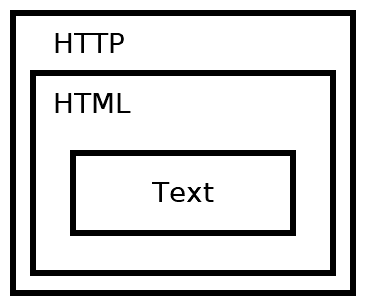The advantage of these abstractions is that, when programming an application, we only need to consider the highest-level protocol. For example, a web browser needs only to implement the protocols dealing specifically with websites—HTTP, HTML, CSS, and so on. It does not need to bother with implementing TCP/IP, and it certainly doesn't have to understand how an Ethernet or Wi-Fi packet is encoded. It can rely on ready-made implementations of the lower layers for these tasks. These implementations are provided by the operating system (for example, Windows, Linux, and macOS).
When communicating over a network, data must be processed down through the layers at the sender and up again through the layers at the receiver. For example, if we have a web server, Host A, which is transmitting a web page to the receiver, Host B, it may look like this:

The web page contains a few paragraphs of text, but the web server doesn't only send the text by itself. For the text to be rendered correctly, it must be encoded in an HTML structure:

In some cases, the text is already preformatted into HTML and saved that way but, in this example, we are considering a web application that dynamically generates the HTML, which is the most common paradigm for dynamic web pages. As the text cannot be transmitted directly, neither can the HTML. It instead must be transmitted as part of an HTTP response. The web server does this by applying the appropriate HTTP response header to the HTML:

The HTTP is transmitted as part of a TCP session. This isn't done explicitly by the web server, but is taken care of by the operating system's TCP/IP stack:

The TCP packet is routed by an IP packet:

This is transmitted over the wire in an Ethernet packet (or another protocol):

Luckily for us, the lower-level concerns are handled automatically when we use the socket APIs for network programming. It is still useful to know what happens behind the scenes. Without this knowledge, dealing with failures or optimizing for performance is difficult if not impossible.
With some of the theory out of the way, let's dive into the actual protocols powering modern networking.
































































